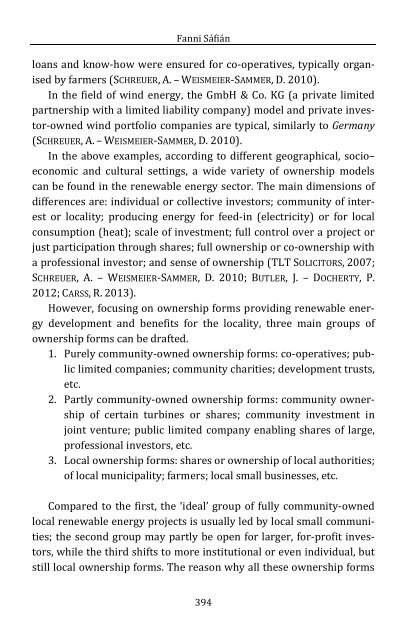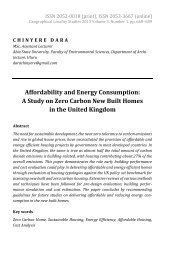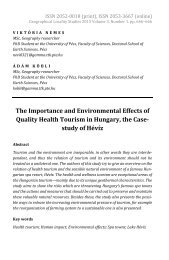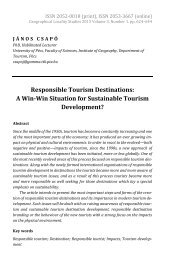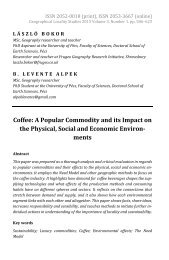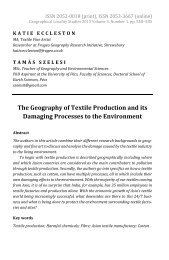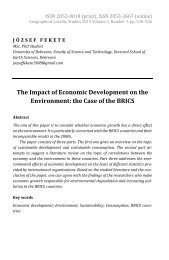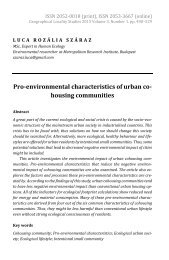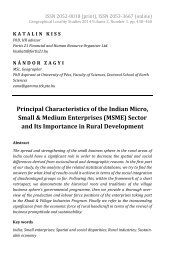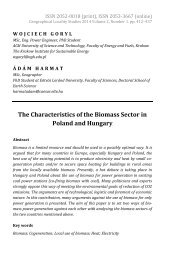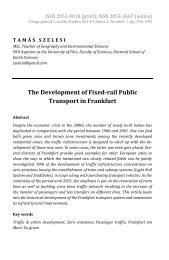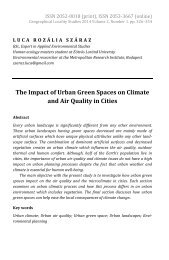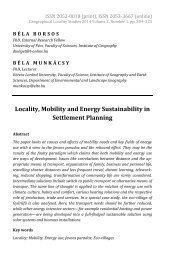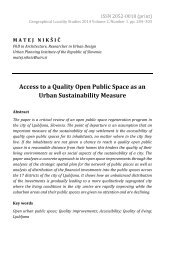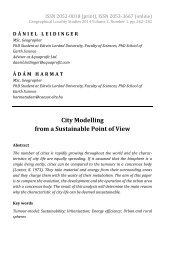Fanni Sáfián: The Synergies of Community Ownership, Renewable Energy Production and Locality – The Cases of Güssing and Samsø
This paper presents the concept and the main forms of community ownership. Analysing the literature and the cases of Güssing, Austria and Samsø, Denmark helps to recognise how to promote a successful local renewable energy project and what kind of additional benefits may be earned by applying the appropriate ownership model and project outline.
This paper presents the concept and the main forms of community ownership. Analysing the literature and the cases of Güssing, Austria and Samsø, Denmark helps to recognise how to promote a successful local renewable energy project and what kind of additional benefits may be earned by applying the appropriate ownership model and project outline.
You also want an ePaper? Increase the reach of your titles
YUMPU automatically turns print PDFs into web optimized ePapers that Google loves.
<strong>Fanni</strong> <strong>Sáfián</strong><br />
loans <strong>and</strong> knowhow were ensured for cooperatives, typically organised<br />
by farmers (SCHREUER,A.<strong>–</strong>WEISMEIERSAMMER, D. 2010).<br />
In the field <strong>of</strong> wind energy, the GmbH & Co. KG (a private limited<br />
partnership with a limited liability company) model <strong>and</strong> private investorowned<br />
wind portfolio companies are typical, similarly to Germany<br />
(SCHREUER,A.<strong>–</strong>WEISMEIERSAMMER, D. 2010).<br />
In the above examples, according to different geographical, socio<strong>–</strong><br />
economic <strong>and</strong> cultural settings, a wide variety <strong>of</strong> ownership models<br />
can be found in the renewable energy sector. <strong>The</strong> main dimensions <strong>of</strong><br />
differences are: individual or collective investors; community <strong>of</strong> interest<br />
or locality; producing energy for feedin (electricity) or for local<br />
consumption (heat); scale <strong>of</strong> investment; full control over a project or<br />
just participation through shares; full ownership or coownership with<br />
a pr<strong>of</strong>essional investor; <strong>and</strong> sense <strong>of</strong> ownership (TLT SOLICITORS, 2007;<br />
SCHREUER, A.<strong>–</strong>WEISMEIERSAMMER, D. 2010; BUTLER, J.<strong>–</strong>DOCHERTY, P.<br />
2012; CARSS,R.2013).<br />
However, focusing on ownership forms providing renewable energy<br />
development <strong>and</strong> benefits for the locality, three main groups <strong>of</strong><br />
ownership forms can be drafted.<br />
1. Purely communityowned ownership forms: cooperatives; public<br />
limited companies; community charities; development trusts,<br />
etc.<br />
2. Partly communityowned ownership forms: community ownership<br />
<strong>of</strong> certain turbines or shares; community investment in<br />
joint venture; public limited company enabling shares <strong>of</strong> large,<br />
pr<strong>of</strong>essional investors, etc.<br />
3. Local ownership forms: shares or ownership <strong>of</strong> local authorities;<br />
<strong>of</strong> local municipality; farmers; local small businesses, etc.<br />
Compared to the first, the ‘ideal’ group <strong>of</strong> fully communityowned<br />
local renewable energy projects is usually led by local small communities;<br />
the second group may partly be open for larger, forpr<strong>of</strong>it investors,<br />
while the third shifts to more institutional or even individual, but<br />
still local ownership forms. <strong>The</strong> reason why all these ownership forms<br />
394


